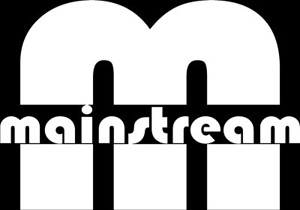 Ever since David Guetta produced the Black Eyed Peas and Lady Gaga came onto the scene with her brand of electronic-influenced pop, U.S. music critics have decreed that EDM hit the mainstream. Yet, favoring a production style does not necessarily mean a genre has gained mainstream acceptance. After all, consider the brief waves of electronic influence in the 1990s: house music creeping into pop and hip-hop in the early 1990s, and electronica acts, such as Prodigy and The Chemical Brothers, achieving some degree of visibility at the middle to later half of the decade. Also, don’t forget that synth-based acts like Depeche Mode have managed to fill stadiums on this side of the Atlantic, including Madison Square Garden.
Ever since David Guetta produced the Black Eyed Peas and Lady Gaga came onto the scene with her brand of electronic-influenced pop, U.S. music critics have decreed that EDM hit the mainstream. Yet, favoring a production style does not necessarily mean a genre has gained mainstream acceptance. After all, consider the brief waves of electronic influence in the 1990s: house music creeping into pop and hip-hop in the early 1990s, and electronica acts, such as Prodigy and The Chemical Brothers, achieving some degree of visibility at the middle to later half of the decade. Also, don’t forget that synth-based acts like Depeche Mode have managed to fill stadiums on this side of the Atlantic, including Madison Square Garden.
But, at none of those points was a DJ at the forefront. In the present, the synths simply aren’t the only factor pulling a crowd or selling records. Instead, DJs – and not just the kind that spin records – have transformed into one facet of mainstream music.
So, how visible is this level of success in the U.S.?
1. Attendance at the Ultra Music Festival continues to grow. The festival, which moved back to Bayfront Park in 2012, saw 165,000 pass through over three days. Compare that to 2005’s levels, which were a mere 45,000. Ultra, as well, isn’t the only mega-EDM festival in North America. Electric Daisy Carnival is now held in more than one location, and New York’s Electric Zoo and Detroit’s Movement Electronic Music Festival have been going strong for a few years or longer.
2. DJs are headlining their own arena tours. Avicii, the Swedish house prodigy behind hit “Levels,” made headlines by doing an arena-only tour in North America, but preceding him was Tiesto, considered the prototype for the stadium-show DJ. Avicii and Tiesto aren’t the only ones, however. Kaskade is doing several arena dates on his Freaks of Nature tour, and Swedish House Mafia managed to do a Madison Square Garden show, although they have yet to do a collective album.
3. In advertising, Diplo showed off just how great the Blackberry Touch is, while Avicii is collaborating with Ralph Lauren brand Denim & Supply. These days, being the face of an advertising campaign shows you’ve made it more than having a hit album.
4. EDM influence is all over the top 40 radio. No matter if David Guetta is releasing a pop or hip-hop track or a producer is drawing from house music, several tracks have a clear EDM influence. Call it a passing fad or a production style likely to stick around, but many of the top 40 singles are dance floor ready on their own.
5. David Guetta has turned into a household name. Not just a pop or hip-hop producer, David Guetta saw his own solo album peak at No. 5 on the Billboard 200. That’s something that musicians, regardless of genre, can only dream of.
6. The Grammy Award for Best Dance Recording actually nominated EDM musicians. In the past, Depeche Mode, The Chemical Brothers, New Order, and The Pet Shop Boys were the closest the Grammys came to nominating an actual electronic artist for this award. But, when competing against a pop star in this category, say, Justin Timberlake or Britney Spears, the electronic artist lost out. And, when Moby loses out to Baha Men (yes, this actually happened in 2001), you know no one knowledgeable enough of the genre is offering input. But, in 2012, Skrillex not only won (for “Scary Monsters and Nice Sprites”), but he also was up against David Guetta and Avicii, Swedish House Mafia, Duck Sauce, Deadmau5, and Robyn.




